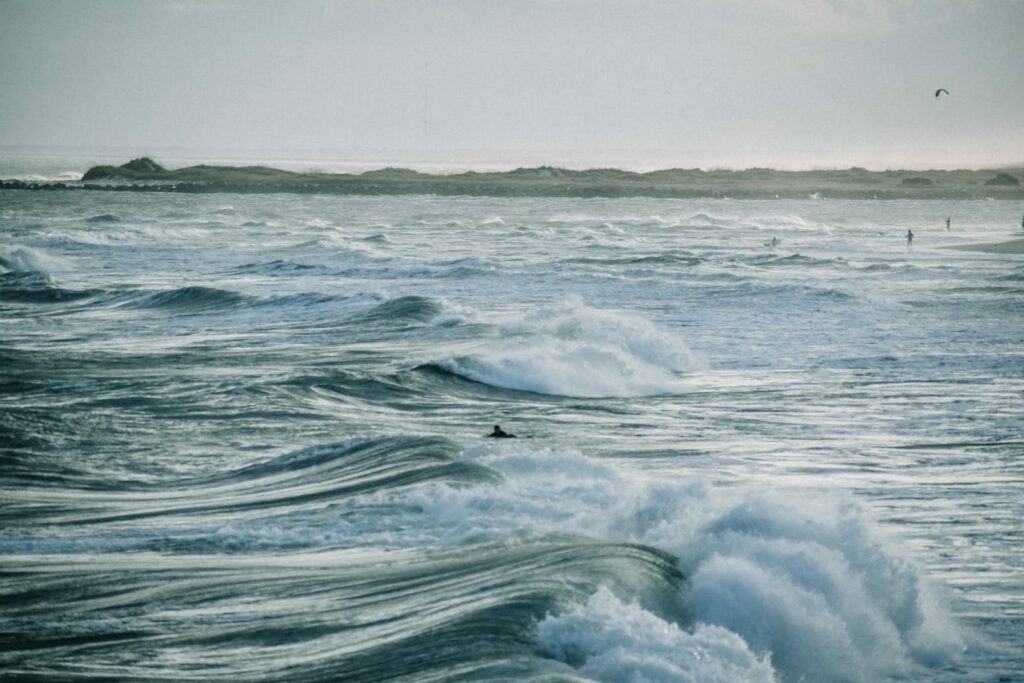Aside from the fact that it tastes unpleasant, drinking ocean water is a bad idea since it induces dehydration.
The issue with ocean water is the amount of salt it contains. Our bodies require a trace quantity of salt. When we consume too much salt, our kidneys must excrete the excess salt through urine.

Human blood has a salinity of 9, which implies that every 1,000 grams of fluid contain 9 grams of salt and 991 grams of water. On the other hand, saltwater is a hypertonic fluid that contains more salt than human blood. As a result, Saltwater has a salinity of 35, roughly four times that of blood.
Drinking salt water would cause your body to expel the excess salt by peeing more water than you consumed. So instead of soothing your thirst, your body will lose water, leading to dehydration and increased thirst.
Drinking salt water can cause muscle cramps, nausea, and elevated blood pressure, in addition to depleting your body’s water supply. If you continued to consume salt water instead of fresh water, you would eventually suffer from organ failure, coma, and even death.
Some creatures have evolved techniques to avoid the problem of excess salt in seawater. Albatrosses, for example, have unique salt glands just below their eye sockets that absorb salt from the water a bird gulps and excrete it in a salt solution that drains out via the tip of its beak.
When you drink salt water, what happens to your cells?
A concentration difference occurs when you drink water. To maintain equilibrium, water from outside your cell moves inside.
This is referred to as an isotonic state.
When you consume too much seawater, the saltiness outside your cells rises quickly, and the cells urge water molecules out to restore balance. Drinking seawater will stimulate your cells to release more water, peeing out more liquid than you take in, even if you are already dehydrated.
The exact reverse occurs if you chug a large volume of pure water. The saltiness outside your cells will rapidly diminish, and water will be driven into them. This can cause the cells to grow and burst, resulting in seizures, coma, and, in extreme situations, death!
This would only happen if you chugged 6 liters or more instantly. So, what can you do if you’re stuck on a barren island with no fresh water nearby? Distillation, which separates the salt from the water, is the easiest method for extracting fresh, clean water from the ocean.
To distill water, you must first heat the seawater to cause it to evaporate, then capture the evaporated water vapor until it cools and condenses back into liquid water, like the condensation on your bathroom mirror after a hot shower.
This condensed water will be completely salt-free and safe to drink.
Why don’t we get our drinking water from the sea by removing the salt from the water?
The issue is that water desalination demands a lot of energy. This is because salt dissolves quickly in water, generating strong chemical connections that are difficult to break. Both energy and the technology used to desalinate water are expensive, so desalinating water can be rather pricey.
When the source is changed to a river or an aquifer, the cost of a cubic meter of water can be reduced to 10 to 20 cents, and farmers frequently pay significantly less.
As a result, it is virtually always cheaper to use local freshwater rather than desalinate seawater. This pricing disparity, on the other hand, is narrowing. Meeting rising demand, for example, by finding a new source of water or constructing a new dam in a state like California, may cost up to 60 cents per cubic meter of water.
And, in certain cases, traditional “harvesting” water methods are no longer available. As a result, this cost number is projected to climb further, which is why California is now seriously contemplating desalination and why Tampa, Fla., has opted to build the largest desalination plant in the United States.
So, how is energy utilized in the separation of salt from water?
Thermal distillation and membrane separation are the two most common procedures for breaking saltwater bonds. Heat is used in thermal distillation: Boiling water converts it to vapor, leaving behind the salt, which is collected and condensed back into the water by cooling it.
Reverse osmosis is the most prevalent kind of membrane separation. A semipermeable membrane separates salt from water by forcing seawater across it. Most new plants, including Tampa’s, now use reverse osmosis because it uses less energy than thermal distillation.

Jay
Jay is a health and wellness enthusiast with expertise in water quality and nutrition. As a knowledgeable advocate for holistic well-being, Jay successfully manages Type 2 Diabetes through informed lifestyle choices. Committed to sharing reliable and authoritative insights, Jay combines firsthand experience with a passion for enhancing health."

